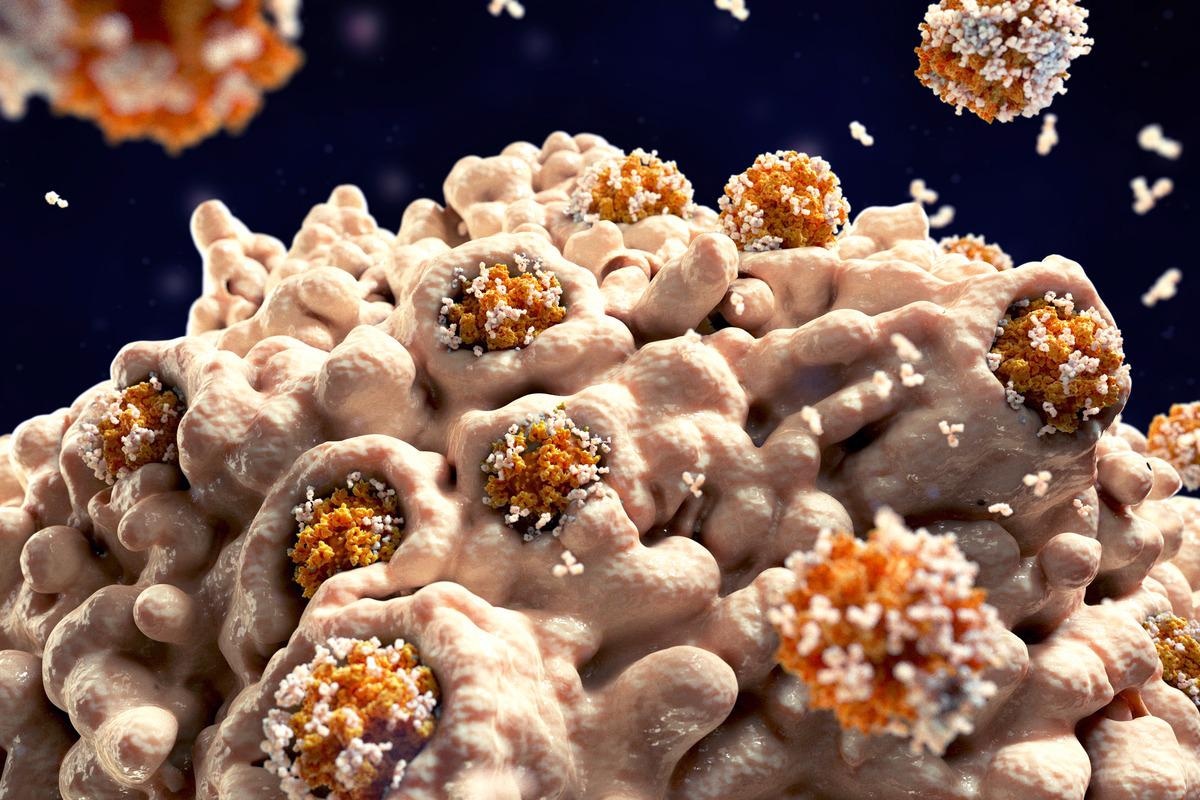 By Sam HancockReviewed by Danielle Ellis, B.Sc.Jan 19 2022
By Sam HancockReviewed by Danielle Ellis, B.Sc.Jan 19 2022Immunization against severe acute respiratory syndrome coronavirus 2 (SARS-CoV-2), the organism that causes coronavirus disease 2019 (COVID-19), normally targets the receptor-binding domain (RBD) of the spike protein, as it is essential to the pathogenesis of the organism. The RBD is located in the S1 subunit of the spike protein and binds to angiotensin-converting enzyme 2 (ACE2) to permit viral cell entry. In a study published in Scientific Reports, researchers have discovered a new way to induce immunity against the RBD.
 Study: Covalent coupling of Spike’s receptor binding domain to a multimeric carrier produces a high immune response against SARS-CoV-2. Image Credit: Juan Gaertner/Shutterstock
Study: Covalent coupling of Spike’s receptor binding domain to a multimeric carrier produces a high immune response against SARS-CoV-2. Image Credit: Juan Gaertner/Shutterstock
The study
To obtain a multimeric carrier for the RBD, the researchers decided to produce an oligomeric form of Brucella abortus (BLS) in E.coli. A gene encoding a BLS carrier protein variant, including an N-terminal TEV protease cleavage site followed by a Gly-tag, was synthesized and sequenced. This allows a polypeptide carrying an N-terminal Gly-Gly-Gly required for the Sortase A-mediated transpeptidation reaction to be produced via removal of the N-terminal Met by digestion with the TEV protease.
Once the BLS was expressed in E.coli, anion exchange chromatography followed by size exclusion chromatography was used to purify the protein, and the identity was verified using mass spectrometry. The TEV protease could then be used to generate the Gly-Gly-Gly motif needed to function as a Sortase A substrate. P. pastoris was used to generate the second required substrate, which was an RBD variant that included a Sortase A recognition signal and a His-tag at the C-terminus. The tertiary structure was confirmed using near-UV-CD spectroscopy.
The first step in the evaluation of the ability of the recombinant RBD to act as a Sortase A substrate, a fluorescent peptide probe, was used as a substrate instead of BLS. Following coupling and SEC separation, around 17% of the RBD was labelled with the fluorescent probe. The RBD that did not react was still labelled with the His tag and could be successfully recovered. The presence of the reaction product was revealed with SEC-HPLC analysis, but no free fluorescent peptide was observed in the elution profile. This suggests that the G25 matrix could separate the remaining free peptide. Overall, the results showed that it is possible to carry out the covalent coupling and that the Sortase A was functional.
Following this, the researchers assessed the functionality of the purified RBD-TMR by testing its ability to bind ACE2. A mix of the labelled protein, a soluble version of ACE2 with a His-tag and an agarose resin was incubated for 30 minutes before the ternary complex of these was separated with centrifugation. This revealed a significant increase in fluorescence in the soluble fraction, indicating that the ACE2 has successfully formed a complex with the RBD-TMR.
The scientists then attempted to couple the RBD and BLS products together. SEC-HPLC analysis revealed that the BLS multimer, RBD alone and reaction product were all present at the end. As BLS is a decameric protein, the products were heterogeneous, so the scientists used low RBD and high BLS concentrations to obtain lower multiplicities. Higher RBD ratios were used to obtain higher multiplicities.
To reduce the complexity of the analysis, the glycans were trimmed with an endoglycosidase and resolved with SDS page. When attempted in batch conditions, the researchers managed to obtain yields of 10-20% RBD coupling, rising to 30% with the inclusion of a concentration step. The product was stable over freeze-thaw cycles.
To test whether this improved the immunogenicity of the RBD, mice were immunized with two doses 30 days apart with both the uncoupled RBD and RBD coupled to BLS at different multiplicities. They found that the coupled RBD showed a significantly higher response than uncoupled, which barely affected the immune response. The multiplicity of the multimers also proved to be an important factor, as low multiplicities showed significantly lower immune responses compared to higher multiplicities.
Finally, the researchers performed neutralization assays using lentiviruses pseudotyped with the SARS-CoV-2 spike protein. The pseudotyped virus could deliver the GFP encoded RNA into cells. Still, immune sera prevented transduction in a concentration-dependent manner, with sera from immunized mice strongly reducing the number of GFP expressing cells.
The conclusion
The authors highlight that they successfully combined the RBD antigen produced in a eukaryote with the BLS carrier expressed from E. coli. As well as this, the pseudovirus neutralization assay and immunization results suggest that RBD-BLS HM could be a very strong candidate for inducing neutralizing antibodies and could potentially be used in vaccine research in future.